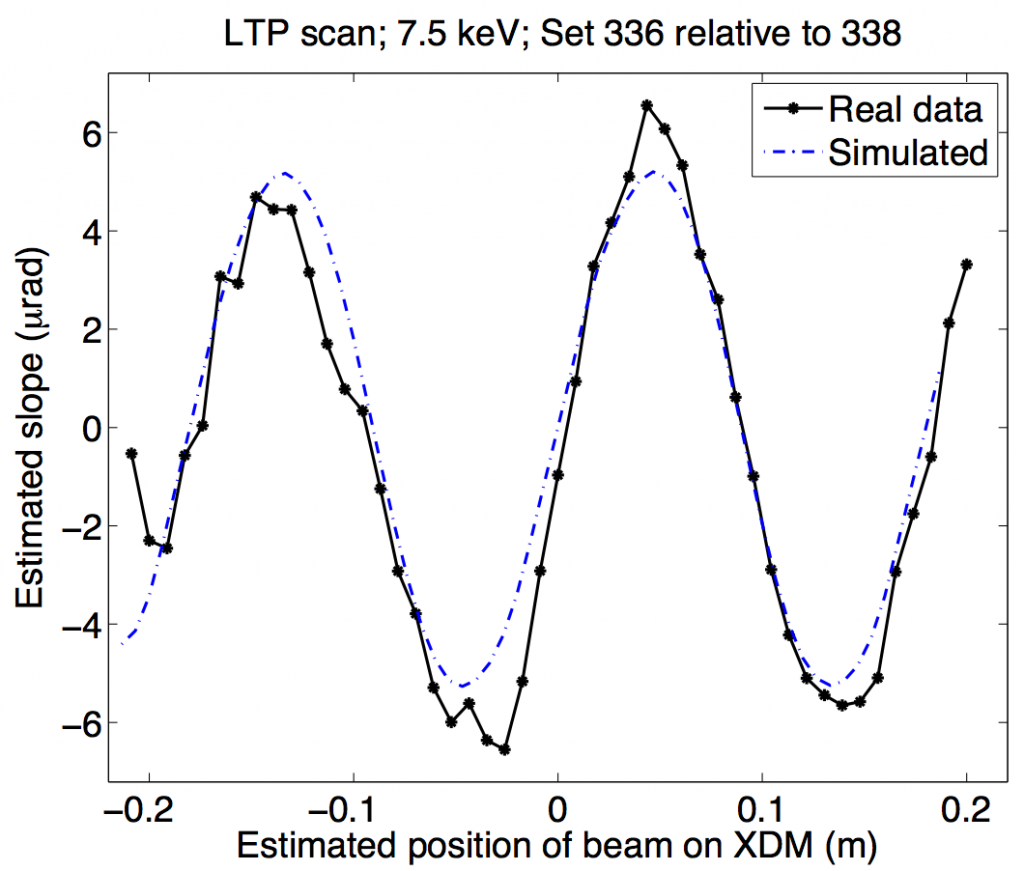Lisa Poyneer (14-ERD-056)
Abstract
All optical systems have distortions, which can be externally or internally generated. For astronomy applications, adaptive optics corrects these distortions by measuring the atmospheric distortions in the incoming light from a star or other object and sending electronic signals to a deformable mirror that can change its shape rapidly to correct for the distortions. In the last two decades, adaptive optics systems in astronomy have advanced from concept demonstrations to scientific mainstays, opening entirely new scientific frontiers, such as the first ground-based images and spectra of faint exoplanets orbiting other stars. Adaptive optics also have the potential to correct internal distortions and provide new, adaptive modes of operation for scientific use when applied to bright, nearly coherent x-ray light sources. We plan to build and evaluate the performance of the first real-time adaptive x-ray optics system, using Livermore's best-in-class, 45-actuator x-ray deformable mirror with a wave-front sensor in experiments conducted at Lawrence Berkeley's Advanced Light Source. Success will enable improved beam lines, production of customized science instruments, and design and construction of new light sources. Concurrently, we will refine our simulation tools and theoretical understanding of components and system-level performance. We also hope to develop sufficient understanding about its performance to enable design of a science-specific instrument.
The development of new x-ray instruments and their subsequent use for programmatic and fundamental science investigations is a mainstay of Lawrence Livermore research. We expect to build and understand the performance of the world's first real-time adaptive x-ray optics system. Our first real-time demonstration of closed-loop adaptive x-ray optics will incorporate self-correction of our deformable mirror's surface errors at the 1-nm level. We will demonstrate improved focusing through correction of polishing errors and aspheric issues on a focusing Kirkpatrick–Baez active optic. We intend to use detailed theory and simulations to verify system performance. This proof of concept is a key step in moving adaptive x-ray optics towards regular use in x-ray light sources. The four U.S. x-ray light sources are all extremely interested in adaptive x-ray optics, and our research will provide Livermore with the opportunity to lead the development of this capability.
Mission Relevance
Development of the first U.S. capability for adaptive x-ray optics can address broad DOE and Laboratory needs. Advanced x-ray optics may significantly improve beam quality at DOE x-ray light source user facilities such as the Linac Coherent Light Source at the SLAC National Accelerator Laboratory in Menlo Park, California, and advanced diagnostics for laser-based user facilities such as Livermore's National Ignition Facility, in support of the Laboratory's core competency in advanced materials and manufacturing.
FY15 Accomplishments and Results
In FY15 we (1) fielded the x-ray deformable mirror and additional hardware at the Advanced Light Source, (2) verified that the figure of the x-ray deformable mirror changes the beam shape, (3) began long-trace profile experiments and measured figure changes on the x-ray deformable mirror surface with sub-microradian accuracy (shown in figure), (4) developed a detailed Fresnel optics simulation of the experiment and verified it to these measurements, (5) identified and mitigated heat build-up issues with the mirror, and (6) procured new electronics for the strain gauges that will allow them to be read out once a second, instead of once every 15 minutes.
Publications and Presentations
- Brejnholt, N. F., et al., Recent results and future plans for a 45 actuator adaptive x-ray optics experiment at the Advanced Light Source. 12th Intl. Conf. Synchrotron Radiation Instrumentation, New York, NY, July 6–10, 2015. LLNL-PROC-674839.
- Poyneer, L., “Sub-nanometer flattening of 45 cm long, 45 actuator x-ray deformable mirror.” Appl. Optic. 53, 3404 (2014). http://dx.doi.org/10.1364/AO.53.003404
- Poyneer, L., “The adaptive x-ray optic project at the Lawrence Livermore National Laboratory.” J. Phys. Conf. 493 (2014). http://dx.doi.org/10.1088/1742-6596/493/1/012022
- Poyneer, L., et al., At-wavelength experiments with a 45-cm long x-ray deformable mirror at the Advanced Light Source. IWXM 2015—International Workshop on X-Ray Optics and Metrology, Berkeley, CA, July 14–16, 2015. LLNL-ABS-669538.
- Poyneer, L., “Control of a 45-cm long x-ray deformable mirror with either external or internal metrology.” Proc. SPIE 9208 (2014). http://dx.doi.org/10.1117/12.2062072







